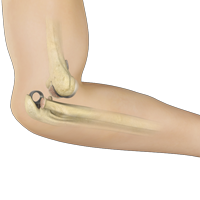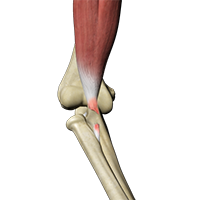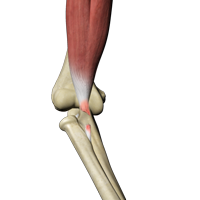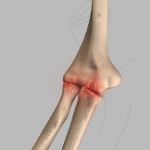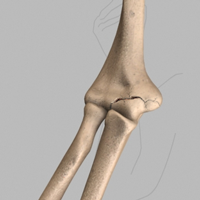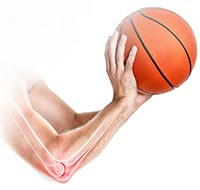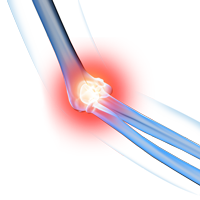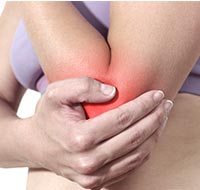Conditions
Elbow Dislocation
The elbow is a hinge joint made up of 3 bones ‐ humerus, radius and ulna. The bones are held together by ligaments to provide stability to the joint. Muscles and tendons move the bones around each other and help in performing various activities. Elbow dislocation occurs when the bones that make up the joint are forced out of alignment.
Bicep Tendon Tear at Elbow
The biceps muscle, located in the front of the upper arm allows you to bend the elbow and rotate the arm. Biceps tendons attach the biceps muscle to the bones in the shoulder and in the elbow.
Distal Biceps Injuries
The biceps tendon at the elbow is called the distal biceps tendon and if there is a tear in this tendon, you will be unable to move your arm from the palm-down to palm-up position. Once the distal biceps tendon is torn, it cannot regrow back to the bone and heal by itself. Permanent weakness during rotatory movements of the forearm may occur if the tendon is not repaired surgically.
Elbow Arthritis
Although the elbows are not weight-bearing joints, they are considered to be most important for the functioning of the upper limbs. Hence, even minor trauma or disease affecting the elbow may cause pain and limit the movements of the upper limbs. Arthritis is one of the common disease conditions affecting the elbow joint.
Elbow Fractures
Three bones, the humerus, radius and ulna, make up the elbow joint. Elbow fractures may occur from trauma, resulting from various reasons; a fall on an outstretched arm, a direct blow to the elbow, or an abnormal twist to the joint beyond its functional limit.
Elbow Injuries
Fracture is a common injury to the elbow. Elbow fractures may result from a fall onto an outstretched wrist, a direct impact to the elbow or a twisting injury. Elbow fractures may cause severe pain, swelling, tenderness and painful movements. If a fracture is suspected, immediate intervention by your doctor is necessary. Surgery is often required if a bony displacement is observed.
Elbow Pain
The elbow is a hinge joint made up of 3 bones ‐ humerus, radius and ulna. The bones are held together by ligaments to provide stability to the joint. Muscles and tendons move the bones around each other and help in performing various activities. Nerves pass through the joint. Damage to these structures can cause elbow pain
Elbow Stiffness (Contracture)
Elbow contracture refers to a stiff elbow with limited range of motion. It is a common complication following elbow surgery, fractures, dislocations and burns.
The normal functional range of motion for an elbow is 30-145 degrees. A stiff or contracted elbow may be diagnosed when the ability to extend or flex the arm is lessened by 30 degrees or more. Flexion contractures greater than 45 degrees will significantly affect the patient’s ability to perform activities of daily living such as bathing and eating.


